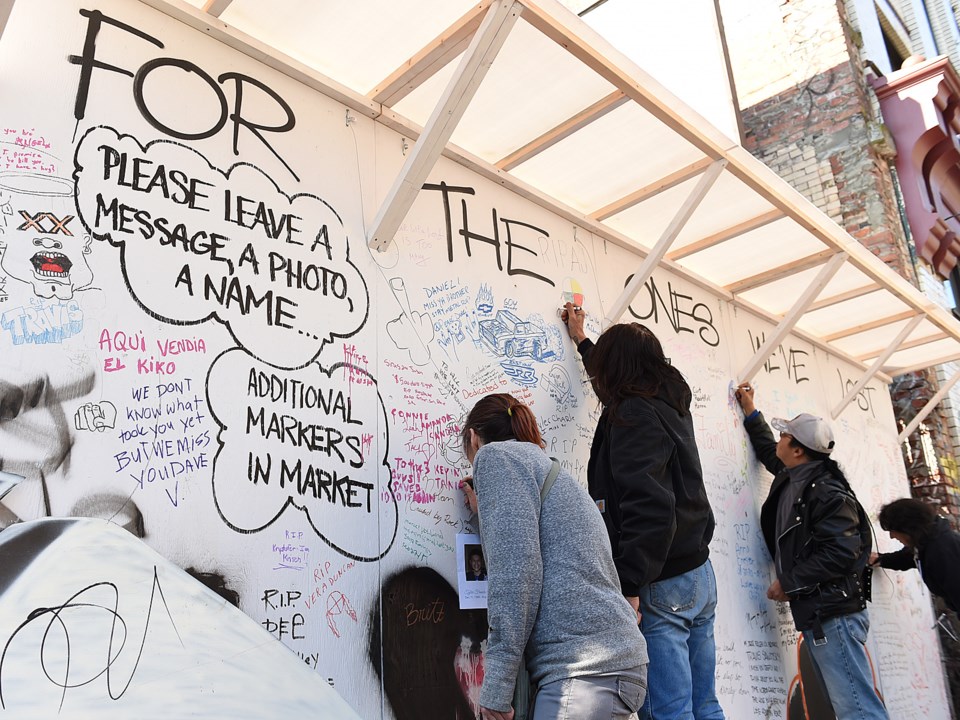CBC Early Edition radio host Stephen Quinn recently interviewed Mayor Kennedy Stewart about his first nine months in office.
During the discussion, Quinn mentioned he had recently been to Main and Hastings in the Downtown Eastside and had never seen the neighbourhood look worse.
The mayor agreed.
When asked what he was going to do about it, the mayor responded it’s all about senior government investment in housing.
With palpable emotion, Quinn asked what goes through the head of the mayor of a wealthy city when he sees such a terrible street scene.
The mayor responded it’s a tough place for sure and he must do a better job of getting senior government funding for housing.
Mayor Stewart’s comments reminded me of a mid-1990s CBC radio interview with another mayor — Phillip Owen. He too was asked about improving the DTES and he too blamed senior governments for not providing enough funding for housing.
I greatly admired Mayor Owen but recall being very disappointed with his answer. I subsequently proposed to him that the DTES tragedy was much more than a shortage of housing. It had to do with an over concentration of people with mental illness and drug addiction, inappropriate policing, and poor planning.
In 2000, Mayor Owen was instrumental in creating The Vancouver Agreement, an initiative undertaken jointly by the three levels of government to regenerate the DTES through collaboration between government and community and business groups.
Mayor Owen also shocked many, including his closest friends, by implementing a “Four Pillar Approach” to fight drug addiction. The four pillars were prevention, treatment, enforcement and harm reduction.
Soon after, Vancouver opened Insite, North America's first legal safe injection site for intravenous drug users in 2003. Sadly, other pillars have not been as successful.
When Larry Campbell became mayor, I had high expectations for him, given his previous roles as an RCMP and Vancouver police officer and chief coroner. Tragically, he did little to improve DTES living conditions. Although he did write a book.
I also had high hopes for former mayor Gregor Robertson. Although he naively campaigned on ending homelessness, he was committed to creating a new DTES neighbourhood plan.
During the planning process, then city manager Penny Ballem was the speaker at a Lambda Alpha International dinner I attended. She was asked how we will know when the city’s new neighbourhood plan is working.
“We will know when the empty and boarded up storefronts are replaced by vibrant businesses.”
I was impressed by her answer.
Unfortunately, the city’s neighbourhood planning process was hijacked by a small constituency led by Jean Swanson and the Carnegie Community Action Project. It wanted a ban on any ownership housing in the DTES core and argued instead for predominantly social housing.
At the time, I questioned whether the DTES should remain a low-income precinct with a high concentration of shelters, social housing, and community services or become a more broadly mixed community.
Stephen Quinn also questioned the likely effectiveness of the plan.
Sadly, since approval of this plan, the DTES has become worse, not better.
So, what should be done?
While there appear to be insurmountable problems, the city might learn from its South Shore False Creek community.
To overcome the myriad of challenges, in the mid-1970s Mayor Art Phillips created the False Creek Development Group led by Doug Sutcliffe, a highly respected, charismatic individual. Through bi-weekly meetings over three years, he convened government and community representatives and key stakeholders to build a remarkable and innovative community.
Perhaps it is time to create a DTES working group, council or cabinet. With the right leader, it could manage the oftentimes competing activities and initiatives.
Hopefully it would develop a strategy to improve the deplorable single-room-occupancy hotels so that residents no longer prefer to sleep on the streets; create more community spaces and facilities for those suffering from mental illness and addictions; address illegal drug dealing and improve the appearance of storefronts, sidewalks and open spaces.
As Karen Ward, a Downtown Eastside resident and drug user advocate observed in another recent interview with Quinn “abnormality has become normalized in the DTES.”
To better understand this, just head over to Hastings and Main.
@michaelgeller



